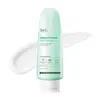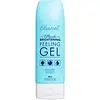What's inside
What's inside
 Key Ingredients
Key Ingredients

 Benefits
Benefits

 Concerns
Concerns

No concerns
 Ingredients Side-by-side
Ingredients Side-by-side

Water
Skin ConditioningCellulose
AbsorbentDipropylene Glycol
HumectantGlyceryl Caprylate
EmollientAcrylates/C10-30 Alkyl Acrylate Crosspolymer
Emulsion StabilisingCaprylyl Glycol
EmollientAllantoin
Skin ConditioningPanthenol
Skin ConditioningPolyglyceryl-10 Laurate
Skin ConditioningPropanediol
SolventArginine
MaskingDisodium EDTA
Glycerin
Humectant1,2-Hexanediol
Skin ConditioningButylene Glycol
HumectantSodium Hyaluronate
HumectantGlycosphingolipids
EmollientHydroxypropyltrimonium Hyaluronate
Ascorbic Acid
AntioxidantHydrolyzed Hyaluronic Acid
HumectantSodium Acetylated Hyaluronate
HumectantHyaluronic Acid
HumectantHydrolyzed Sodium Hyaluronate
Skin ConditioningSodium Hyaluronate Crosspolymer
HumectantPotassium Hyaluronate
Skin ConditioningWater, Cellulose, Dipropylene Glycol, Glyceryl Caprylate, Acrylates/C10-30 Alkyl Acrylate Crosspolymer, Caprylyl Glycol, Allantoin, Panthenol, Polyglyceryl-10 Laurate, Propanediol, Arginine, Disodium EDTA, Glycerin, 1,2-Hexanediol, Butylene Glycol, Sodium Hyaluronate, Glycosphingolipids, Hydroxypropyltrimonium Hyaluronate, Ascorbic Acid, Hydrolyzed Hyaluronic Acid, Sodium Acetylated Hyaluronate, Hyaluronic Acid, Hydrolyzed Sodium Hyaluronate, Sodium Hyaluronate Crosspolymer, Potassium Hyaluronate
Water
Skin ConditioningCellulose
AbsorbentDipropylene Glycol
HumectantTrehalose
HumectantButylene Glycol
HumectantFomes Officinalis Extract
Skin ProtectingAlthaea Rosea Flower Extract
Skin ConditioningLeontopodium Alpinum Extract
Skin ConditioningSolanum Lycopersicum Fruit/Leaf/Stem Extract
AstringentAcetyl Hexapeptide-8
HumectantDecapeptide-12
BleachingAloe Barbadensis Leaf Extract
EmollientDiospyros Kaki Leaf Extract
Skin ProtectingRhus Semialata Gall Extract
Skin ConditioningBetula Platyphylla Japonica Bark Extract
Skin ConditioningHoney Extract
HumectantGlycyrrhiza Glabra Root Extract
BleachingSalix Nigra Bark Extract
Skin ProtectingTocopheryl Acetate
AntioxidantAscorbyl Glucoside
AntioxidantCaprylhydroxamic Acid
Caprylyl Glycol
Emollient1,2-Hexanediol
Skin ConditioningPEG-60 Hydrogenated Castor Oil
EmulsifyingAllantoin
Skin ConditioningAcrylates/C10-30 Alkyl Acrylate Crosspolymer
Emulsion StabilisingPotassium Hydroxide
BufferingDisodium EDTA
Parfum
MaskingChlorphenesin
AntimicrobialWater, Cellulose, Dipropylene Glycol, Trehalose, Butylene Glycol, Fomes Officinalis Extract, Althaea Rosea Flower Extract, Leontopodium Alpinum Extract, Solanum Lycopersicum Fruit/Leaf/Stem Extract, Acetyl Hexapeptide-8, Decapeptide-12, Aloe Barbadensis Leaf Extract, Diospyros Kaki Leaf Extract, Rhus Semialata Gall Extract, Betula Platyphylla Japonica Bark Extract, Honey Extract, Glycyrrhiza Glabra Root Extract, Salix Nigra Bark Extract, Tocopheryl Acetate, Ascorbyl Glucoside, Caprylhydroxamic Acid, Caprylyl Glycol, 1,2-Hexanediol, PEG-60 Hydrogenated Castor Oil, Allantoin, Acrylates/C10-30 Alkyl Acrylate Crosspolymer, Potassium Hydroxide, Disodium EDTA, Parfum, Chlorphenesin
 Reviews
Reviews

Ingredients Explained
These ingredients are found in both products.
Ingredients higher up in an ingredient list are typically present in a larger amount.
1,2-Hexanediol is a synthetic liquid and another multi-functional powerhouse.
It is a:
- Humectant, drawing moisture into the skin
- Emollient, helping to soften skin
- Solvent, dispersing and stabilizing formulas
- Preservative booster, enhancing the antimicrobial activity of other preservatives
Acrylates/C10-30 Alkyl Acrylate Crosspolymer is a synthetic polymer. It is used to thicken and improve the texture of products. Due to its properties, it can prevent water and oil ingredients from separating.
Allantoin is a soothing ingredient known for its protective and moisturizingg properties. Because of this, it is often added to products with strong active ingredients.
Studies show higher concentrations of this ingredient can promote wound healing.
Though it can be derived from the comfrey plant, allantoin is produced synthetically for cosmetic products to ensure purity.
Learn more about AllantoinButylene Glycol (or BG) is used within cosmetic products for a few different reasons:
Overall, Butylene Glycol is a safe and well-rounded ingredient that works well with other ingredients.
Though this ingredient works well with most skin types, some people with sensitive skin may experience a reaction such as allergic rashes, closed comedones, or itchiness.
Learn more about Butylene GlycolCaprylyl Glycol is a humectant and emollient, meaning it attracts and preserves moisture.
It is a common ingredient in many products, especially those designed to hydrate skin. The primary benefits are retaining moisture, skin softening, and promoting a healthy skin barrier.
Though Caprylyl Glycol is an alcohol derived from fatty acids, it is not the kind that can dry out skin.
This ingredient is also used as a preservative to extend the life of products. It has slight antimicrobial properties.
Learn more about Caprylyl GlycolCellulose is the main component of plant cell walls. It is used as an emulsifier, absorbent, and texture enhancer.
This ingredient has many functions:
Fun fact: Cellulose is the most abundant form of organic polymer on Earth.
Learn more about CelluloseDipropylene Glycol is a synthetically created humectant, stabilizer, and solvent.
This ingredient helps:
Dipropylene glycol is technically an alcohol, but it belongs to the glycol family (often considered part of the ‘good’ alcohols). This means it is hydrating and gentle on skin unlike drying solvent alcohols like denatured alcohol.
As a masking agent, Dipropylene Glycol can be used to cover the smell of other ingredients. However, it does not have a scent.
Studies show Dipropylene Glycol is considered safe to use in skincare.
Learn more about Dipropylene GlycolDisodium EDTA plays a role in making products more stable by aiding other preservatives.
It is a chelating agent, meaning it neutralizes metal ions that may be found in a product.
Disodium EDTA is a salt of edetic acid and is found to be safe in cosmetic ingredients.
Learn more about Disodium EDTAWater. It's the most common cosmetic ingredient of all. You'll usually see it at the top of ingredient lists, meaning that it makes up the largest part of the product.
So why is it so popular? Water most often acts as a solvent - this means that it helps dissolve other ingredients into the formulation.
You'll also recognize water as that liquid we all need to stay alive. If you see this, drink a glass of water. Stay hydrated!
Learn more about Water